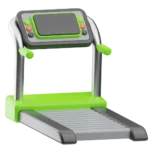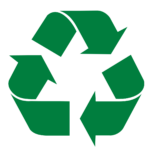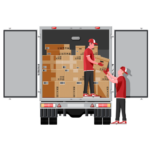Gym Waste Collection
Save on gym waste collection quotes today
Just enter your gyms postcode…
Save on gym waste collection quotes today
Just enter your gyms postcode…
Start saving now
Our experts delve into the essential strategies, innovative solutions, and best practices for managing waste generated by fitness facilities.
Practical waste minimisation strategies for gyms, focusing on reducing, reusing, and recycling to reduce waste and enhance sustainability.

Introducing refillable water stations encourages members to bring and use reusable water bottles to reduce plastic waste in the gym.
This initiative minimises the consumption and disposal of single-use plastic bottles and promotes hydration in an eco-friendly manner. By making refillable stations easily accessible and visible, gyms can foster a culture of sustainability in their community while catering to the health and wellness of their members.

Encourage gyms to minimise their reliance on single-use plastics by adopting alternatives like providing or selling reusable bottles and cups and using eco-friendly packaging for on-site products.
This effort significantly reduces plastic waste, promoting environmental sustainability within the fitness community.

To significantly reduce the environmental impact, shift to biodegradable cleaning products for all gym cleaning needs.
These eco-friendly alternatives ensure a clean and safe environment for gym members and minimise harmful chemical runoff into water systems.

Investing in high-quality, durable gym equipment reduces the frequency of replacements and repairs, leading to less waste and more sustainable operations.
This approach ensures that gym members have access to reliable and safe equipment and aligns with environmental stewardship by minimising the carbon footprint associated with manufacturing and disposing of gym machinery.

Partner with recycling services or donate to organisations to ensure that old gym equipment is repurposed or recycled rather than ending up in landfills or incinerators.
This strategy extends the lifecycle of valuable resources, supports community fitness initiatives, and reduces environmental impact.
The latest government figures show that the UK generated 222.2 million tonnes of waste, with England accounting for 84% of that total. 19.75% of that waste was attributed to commercial and industrial businesses, including gyms and fitness centres.
Unwanted gym equipment has several pathways to a second life, ensuring it doesn’t just end up in landfills. Here’s what you can do with old or broken exercise equipment:

You can take your old gym equipment to local waste commercial recycling centres, which will be sorted and sent for reuse or recycling. This is a practical option for dealing with electronic and electrical gym equipment, reducing environmental impact by diverting waste from landfills.

Another excellent way to give your old gym gear a new purpose is to donate it to charities that resell sports equipment. Some charities, for example, focus on sending donated football and rugby kits to children and communities in Ghana and other countries, promoting sports and physical activity.

If you’re creative, consider upcycling or repurposing your gym equipment. Old equipment can be transformed into something new and useful, like turning dumbbells into doorstops or using parts of machines as furniture or garden planters.

Contacting a junk removal service might be the best option for equipment beyond repair. These companies can dispose of your equipment responsibly, whether selling it for scrap metal or taking it to a recycling centre.

For businesses or individuals with bulk amounts of gym equipment to dispose of, commercial removal services like GYMSTOCK offer collection, donation, recycling, and selling options, making the process hassle-free.

For gyms looking to replace old equipment, it’s worth looking at selling on online marketplaces, including eBay. Gym equipment is expensive, and someone or a small private gym could use it rather than send it to the landfill. You’ll also get some cash for it instead of paying for one-off removal.
The Gym Group is pioneering sustainability within the UK fitness industry, notably as the first carbon-neutral gym chain.
A comprehensive approach towards minimising waste is a key part of their sustainability efforts. The Gym Group successfully recycled 95% of its waste in 2021 and is actively working to reduce waste to landfill further.
Efforts include removing single-use plastics from vending machines and conducting regular audits to enhance efficiency across their operations.
Members are also encouraged to participate in sustainability practices, such as taking shorter showers, bringing reusable water bottles and towels, opting for sustainable transport options to the gym, and correctly using recycling bins provided on-site.
💡They have committed to significant carbon emission reductions, targeting a 50% cut in Scope 1 and 2 emissions by 2030 and aiming for net zero by 2045.
Our waste experts answer frequently asked questions.
Members can contribute using refillable water bottles instead of single-use plastics.
Participating in towel reuse programs, properly sorting their waste into designated recycling bins, and supporting sustainability initiatives introduced by the gym.
A gym’s waste management practices are regularly audited through internal assessments and external certifications, looking at waste reduction achievements and areas for improvement.
Feedback from members and staff also plays a crucial role in continuous improvement.